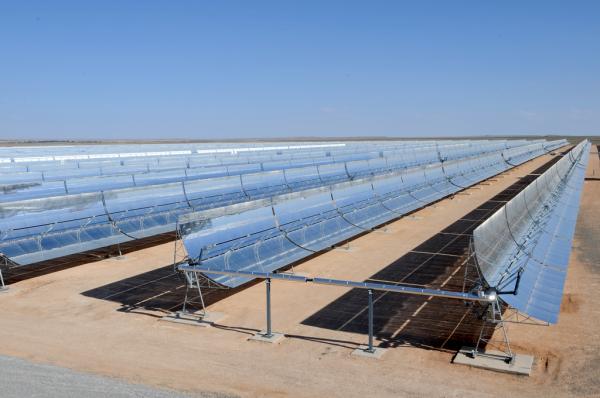
Energy use (kg of oil equivalent per capita)
Energy use refers to use of primary energy before transformation to other end-use fuels, which is equal to indigenous production plus imports and stock changes, minus exports and fuels supplied to ships and aircraft engaged in international transport.
This past week, we discussed with you the different categories of our campaign. We had also previously asked our audience of African writers to pen their thought on climate change based on these very same categories.
Not so surprisingly many of you chimed in on the topic of energy. Energy drives a lot of human activity these days and is a necessary fuel for some of the fastest growing economies in Africa and the world; both as a domestic resource and as a revenue stream.
We also discussed how Africa could better balance the attack on solving energy poverty and environmental degradation. Just today there was a brief discussion on Uganda’s deepening energy void. Jared Ombui, had this to say on Twitter following never-ending black outs and loading-shedding in the country:
“Nuclear will end blackouts. Ask France…”
This got us thinking. Access to nuclear energy might work in Africa and could possibly be a great solution, but it is a solution whose time is not yet ready on the continent. If the near-meltdowns that plagued Japan’s nuclear facilities after this year’s earthquake are any indication, nuclear power may be too far down the road to be an effective remedy for the continent’s energy poverty.
If we follow the continent’s pattern of innovation leap-frogging that redefined computing and telecommunications industries, can we posit that solar and wind are solutions waiting for an appropriate distribution strategy for the continent?
Katherine Lucey, founder of C4C partner, Solar Sister, is hopeful about solar technology on the continent:
Solar is the most democratic source of energy that we have. We all live under the same sun. It is available freely and abundantly. Especially for those living on or near the equator, solar is a renewable, distributed energy source. And especially where the lack of infrastructure investment means that there are no wires for a grid system, solar is an energy solution that people can access themselves, today, without waiting for government or NGO interventions that may never come.
The reduction in infrastructure expenditures for mobile network operators made it easy for mobiles to surpass land lines in the last decade on the continent. The marriage of 3G internet wireless modems and laptops has ushered in a quick death to location-based internet access.
Like communications technologies, could solar be the next technology to help the continent leap-frog traditional energy? Like land-lines, hydro, and nuclear energy sources are centralized and require large investments in delivery mechanisms, making them less favorable energy solutions.
Hydro-power currently makes up the lion’s share of renewable energy produced globally, while solar accounts for only a sliver. Africa, on the other hand, has managed to only tap into 20% of it’s total available hydro capacity. Some of the biggest barriers to faster hydro-energy adoption include lack of adequate infrastructure to move this energy to the last mile, the high cost of building dams, and the accompanying disruption of sensitive ecological systems. A recent HYDROPOWER RESOURCE ASSESSMENT OF AFRICA noted as much:
The total installed capacity of Africa is about 20.3GW and a total generation of 76 000GW/year. A comparison with the Gross theoretical hydropower potential of about 4 000 000 GWh/year indicates that the current production from hydropower plants in Africa is about 20% of the total potential.
Of course, the solar revolution is not going to happen overnight, or without its own investment requirements. But if a financial bet similar to mobile platform investment can be targeted towards upscaling the solar industry, imagine the possibilities. And it requires less investment than you might think.
Katherine Lucey again,
Education, awareness, distribution - a presumption that it is expensive and a luxury, when in fact it is extremely economical and appropriate for all levels of income, from the $20 lamps that replace families expenditure of up to $100 of kerosene in one year, to larger scale systems appropriate for the rising African middle class.



